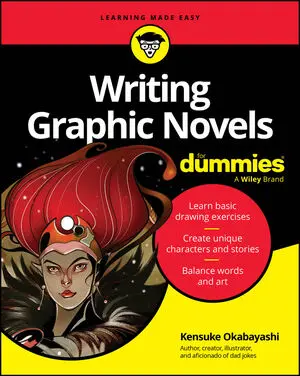Structure is simply the bones of your children's story upon which are laid the skin and organs: drama, pacing, effective transitions, and strong point of view. You hear a lot of talk about structure in writing circles, and it’s true that structure is the key to a good story.
To give a story structure means you tie in your story’s beginning, middle, and end with characters who move it forward with action and a plot that proceeds apace.
You can turn your story’s plot structure into an outline pretty easily. Outlining your story allows you to pinpoint what your main character wants, what she does to get it, and how conflict intermittently challenges her.
If other characters become important, you can expand your outline to include them too. Regardless, your outline becomes a repository for the who, what, when, where, why, and how of each of the three parts — beginning, middle, and end — of your story. From there, you can easily flesh out the details.
Plot and character are closely intertwined because the protagonist drives the plot. Character and plot are so connected that they proceed neck and neck on the same schedule. When the plot hits a bump, so does the main character (or vice versa). When the conflict in the plot approaches resolution, so does the main character’s desire.
And when the ending results in a changed character and a wrapped-up plot, the reader feels like the journey was worth it.
Sometimes visualizing what plot structure looks like is challenging, even with an outline. Fortunately, if you have a character arc created for your main character, you already have a plot visual handy.
Create a step sheet
A step sheet (also referred to as an action outline) is a useful tool for keeping track of plot points. It can also help you keep track of beginning/middle/end, pacing, and character development. You can make your step sheet as detailed or as thinly written as you feel is necessary.
The idea is to create a simpler outline to really visualize your story’s plot structure. You can follow your step sheet with a detailed outline if you choose.
Here’s what the beginning of a step sheet may look like, using the story of Cinderella as an example. A lot of the steps in the plot have been cut off and just a few key examples are left for you to look at. Your step sheet, on the other hand, should have a bullet point for every single action that takes place.
The beginning:
Plot point: A spoiled young girl’s wealthy father remarries a woman with two daughters.
Character development: Show Cinderella in action trying to befriend mean stepsisters.
Pacing: Show emotion behind growing dejection she feels.
Also at the beginning:
Plot point: The father dies.
Character development: Show Cinderella’s grief.
Pacing: Show stepmother and sisters plotting to take over house and grounds.
The middle:
Plot point: A prince holds a ball to find a bride.
Character development: Show entire town excited over event, Cinderella depressed at not being able to participate.
Pacing: Show prince in action as adventurer, romantic — a definite catch.
The end:
Plot point: The prince and the princess live happily ever after.
Character development: Show the rightness of the good guys winning.
Pacing: Slow down into final ending.
Your main character is the focal point of your step sheet, but you can add secondary characters if they affect the main plotline. Just make sure their fates are also satisfactorily wrapped up at the conclusion of the story.
Flesh out your outline
A step sheet is a bare bones outline that helps you clearly see your plot structure. Some writers like a more detailed outline so they have a sort of blueprint to write from. A more fleshed out outline can provide a separate place for you to add notes about details you want to remember to incorporate when you get to that point in your story.
It can also provide highly left-brained people with a literary to-do list, highlighting specific steps to check off once accomplished.
Outlines are organizing tools. They aren’t holy words carved in stone. If, in the course of writing fiction, you find yourself veering away into some interesting but unforeseen place, you’re allowed to follow your characters to see where they lead you.
Now suppose you choose to write your Cinderella story as a middle-grade chapter book. Now you can create a full outline of the story, starting with the journalist’s trusty six questions:
Who: Character development
What: Plot point
When: Time
Where: Setting
Why: Drama, pacing, and character motivation
How: Plot point
So the start of your outline may look like this:
Chapter 1:
Setting: A castle and its grounds.
Time: Medieval Europe.
Plot point: A spoiled young girl’s wealthy father remarries a woman with two daughters.
Character development: Show Cinderella in action trying to befriend mean stepsisters.
Supporting characters: Father, stepmother, stepsisters, house staff.
Pacing: Show emotion behind the Cinderella’s growing dejection.
Chapter 2:
Setting: Same but widens to include the town and church and burial ceremony.
Time: A few months later.
Plot point: The father dies.
Character development: Show Cinderella’s grief.
Supporting characters: Introduce Cinderella’s best friend, Jude.
Pacing: At end of chapter, show stepmother and sisters plotting to take over house and grounds.
Chapter 3:
Setting: Same castle, but show Cinderella going to town.
Time: A week later.
Plot point: The stepmother enslaves the girl, treating her badly.
Character development: Show Cinderella facing up to her tasks with good cheer, determined to survive despite the conditions.
Supporting characters: Further develop relationship between Cinderella and Jude. Show townspeople watching her demise from upper-class to working class.
Pacing: Show how stepmother begins plundering Cinderella’s father’s assets to feed her own vanity and greed.






